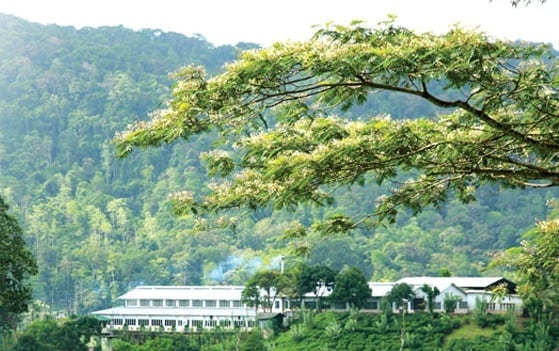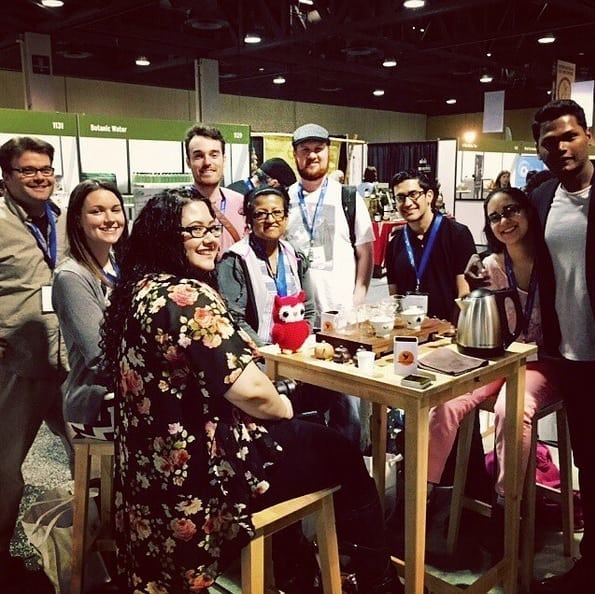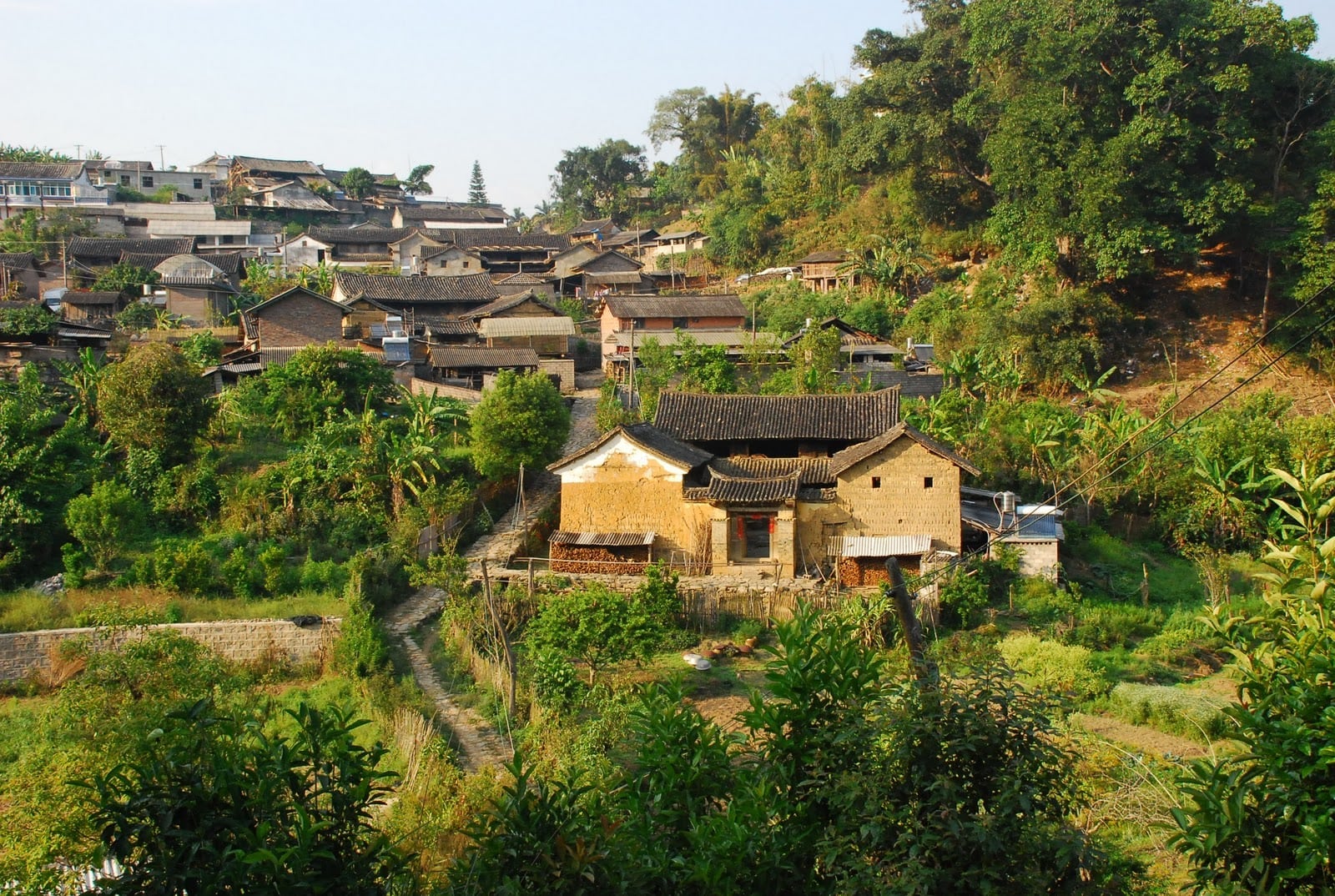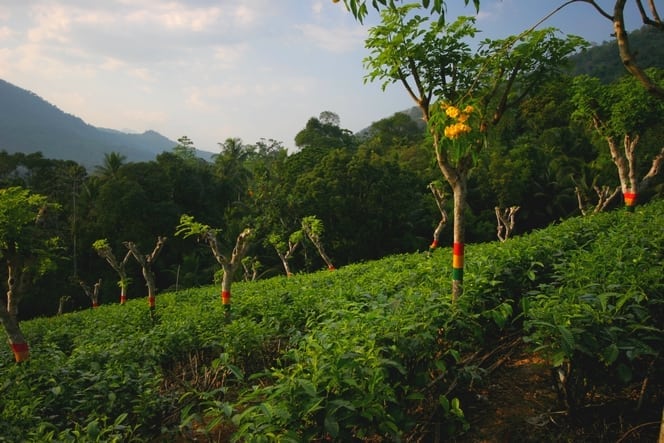Let’s travel back to a more innocent time – November of 2011, to be precise. It was around that time that I finally found a purpose for this here tea blog. My goal was to track down unique teas, unusual blends, and/or teas with fascinating stories behind them. To commemorating that unusual sense of focus (for someone like me), I created “The Tea WANT! List”. I’d made reference to such a “list”-‘s existence for the better part of two years, but it was high-time to make it tea-tangible.
One of the items on the list was oolong from Ceylon (Sri Lanka). I also added the line: “I don’t even think it exists.”
Tea Trade Jackie replied with, “Uh, yeah it does.” And proceeded to show me various links.
In response to that, I did my own digging and ran across an oolong that sounded familiar. Sapphire Oolong from De Vos Tea.

Why does that sound famil-…oh crap! I said to myself.
A Ceylon oolong (Ceylong?) had been sitting under my nose the entire time! Allow me to explain…
I got my start in tea-writing on a nifty review site called Teaviews. I owe my strange palate development to that site, as well as my exposure to the tea community at large. One of the teas I had a chance to review was a Ceylon white tea dubbed “Virgin White”. The estate that produced it was called Handunugoda, and it was located in the district of Galle – in Sri Lanka’s Southern Province.

Sri Lanka was the country that got me to like black teas. Before that, I’d primarily been a white tea man. And the white teas from there…ohmigawww! Heaven in a heated cup.
Moving right along, the Handunugoda estate also produced green teas, blends, and – wait for it…a Ceylon oolong, the aforementioned Sapphire. The story behind this stuff was crazy. Apparently, the estate had a plot of land set aside just for the tea plants used to produce the oolong. The soil was laced with tiny sapphires – no bigger than a pinhead.

Er…a little smaller than those.
What frustrated me was not that this tea was slightly out of my reach, but that it had been in my path…and I didn’t grab it. The tea came up in review circulation twice, and I never requested it. I never put two-and-two together until two years later.
I visited the De Vos Tea website to purchase some and found it only half-working. Every time I tried to make a purchase, the site would fizzle out. Yes, actually fizzle. I zapped them a message to see what was amiss, but never got a reply. About a month after that inquiry, the site disappeared – less than half of it showed up in search queries. I could only conclude that they went out of business.
There was only one thing left to do: Contact the actual tea estate. This would mark only the second time I’d ever sent a message to an estate directly without locating a retailer. The last time I did this was for the Bhartia estate’s Assam Green Tea. It worked out well that time, but I was still nervous.
Then a funny thing happened…
When I inquired about doing a feature on the oolong, I didn’t just receive a reply from their marketing guru. I also got one from the estate’s proprietor, Malinga Gunaratne. Achievement: Unlocked.
They agreed to send me a sample. A couple of months went by and it arrived. Oh my…

The package was huge.

I tore it open that night. No, I didn’t care that I had to work the next day. This was for science! Or something.
The leaves resemble Da Hong Pao or a Georgian black tea – long, twisty, brown-to-soot-black. The aroma on these however was pure Ceylon, alternating between osthmanthus flowers and an indescribable earthy lean.

The first time I brewed this up (like…that same day), I did it Western-style. The 100-gram box it came in recommended about a teaspoon of leaves steeped in a cup for three-to-five minutes with boiled water. I approximated that.
The result was a jewel of a liquor – light crimson – with a surprisingly malty/roasty nose. Very odd for an oolong or a black tea. Almost as if it was struggling with a specific identity, or settling on its own uniqueness. The taste was a beautifully smooth, full-bodied experience. Pinpointing actual taster notes would be difficult. I will say that it gave off hints of nut, vanilla, lotus blossoms, and an Assam-like astringency toward the end. This was a morning person’s oolong, for certain.

A second infusion done the same way (but with a little more neglect) turned up a liquor with a winy note. Nothing like a little “wine” in the morning to get you started. Gotta love teas that let you make it up as you go along.
In the ensuing weeks, I decided to brew it gongfoolishly with a gaiwan and a few steeper cups. The results were thus:

First infusion (twenty seconds): A darker, amber-ish liquor resulted with an aroma of syrup-lathered chestnuts. The nutty aspect of the aroma translated to the taste with a bold profile of flowers, caramel and earth. Like a Ceylon OP but with more going on.
Second infusion (thirty-five seconds): The nutty aspects were a bit stronger, as was a malty lean toward the trail-off. This steep was more black tea in character than oolong. The subtle earthen qualities, however, emerged in the aftertaste.
Third infusion (fifty seconds): Probably the strongest oolong-ish presence emerged in this. Totally reminded me of a Da Hong Pao through-and-through…in the best possible way.
Of the two different approaches, I preferred the Western one. The oolong took on more Ceylon-ish notes when I did it that way – floral and fantastic. One of the best non-Taiwanese oolongs I’ve ever come across. And it only took me two years’ worth of hindsight to get to it.
And speaking of hindsight, I just realized the Handunugoda estate also puts out a cinnamon-smoked black Lapsang Souchong variant. Well, shoot. Guess that’s another one for The Tea WANT! List.
























